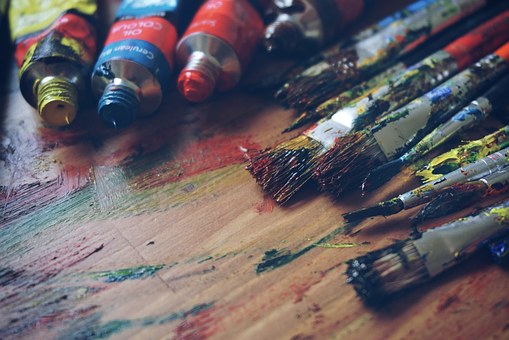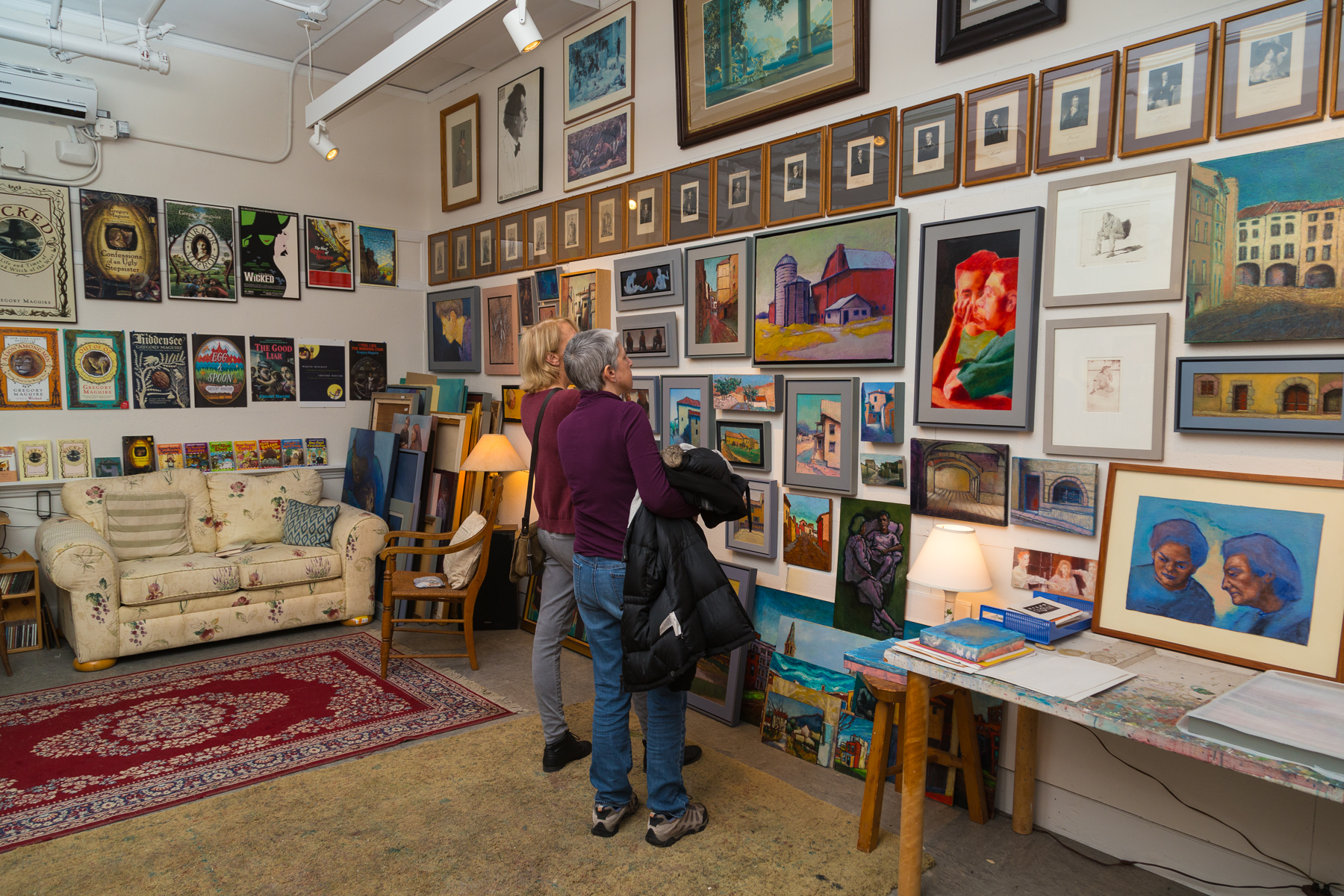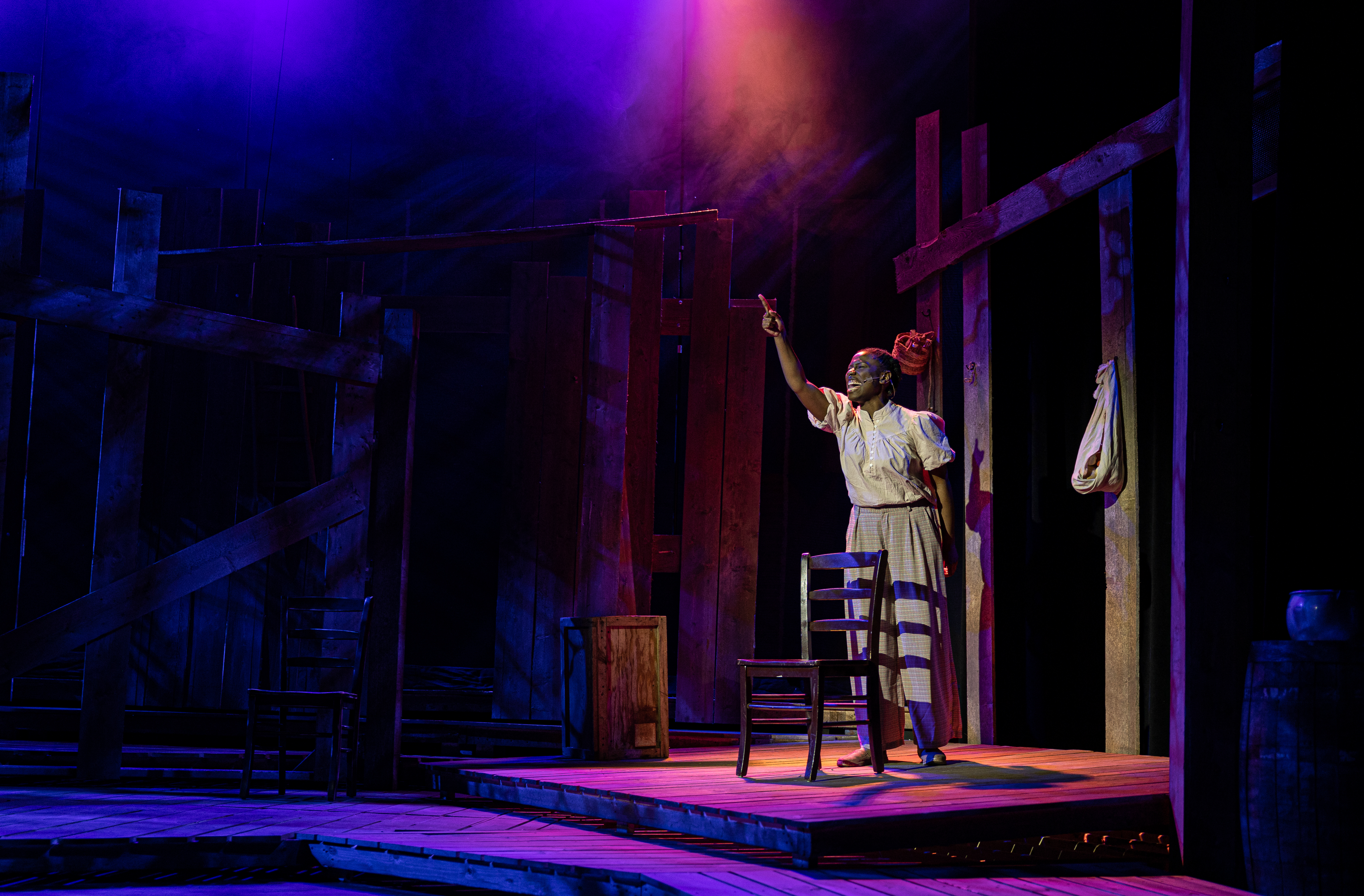What’s With the Green Faces?
June 28, 2017 by Jess
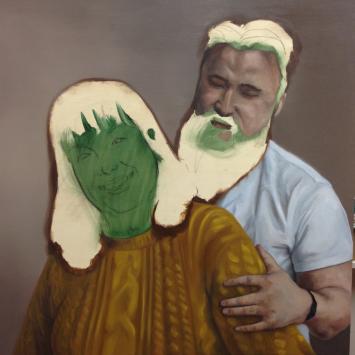
ritten by The Umbrella's 2017-2018 Artist-in-Residence, Meghan Murray
If you peek into my studio, you may notice something odd. Whatever painting is in-progress most likely features a couple people (or aliens??) with cool green skin.
I’ve been doing green underpaintings on my portraits for a few years now, and there’s a few benefits to this technique. Underpainting is generally a monochromatic tonal painting that is meant to be painted over to make the final colors more luminous and vibrant. The practice of underpainting originated in the Renaissance (when else?) and has several types, most well known being grisaille and verdaccio. Grisaille is an underpainting in gray, while verdaccio is usually in a yellow or greenish-brown. I like to use a green-earth underpainting, also known as verdaille, because the green contrasts the final pink flesh tones and helps them “pop”. I use a cool green instead of a warm green to further complement the warmth in flesh tones.
Further, there is a difference between underpainting and a similar technique called “imprimatura”, which also became a standard painting practice during the Renaissance. Underpainting is a fully developed tonal painting that uses color and white, while imprimatura is simply a wash of pure color to create a toned field on which to paint. I vary these two techniques, but always use a cool green beneath the final painting. Besides the balance of color these techniques provide, I find that a toned surface is much less intimidating than a blank white one.
Here is a recent example of the imprimatura process in a double painting:
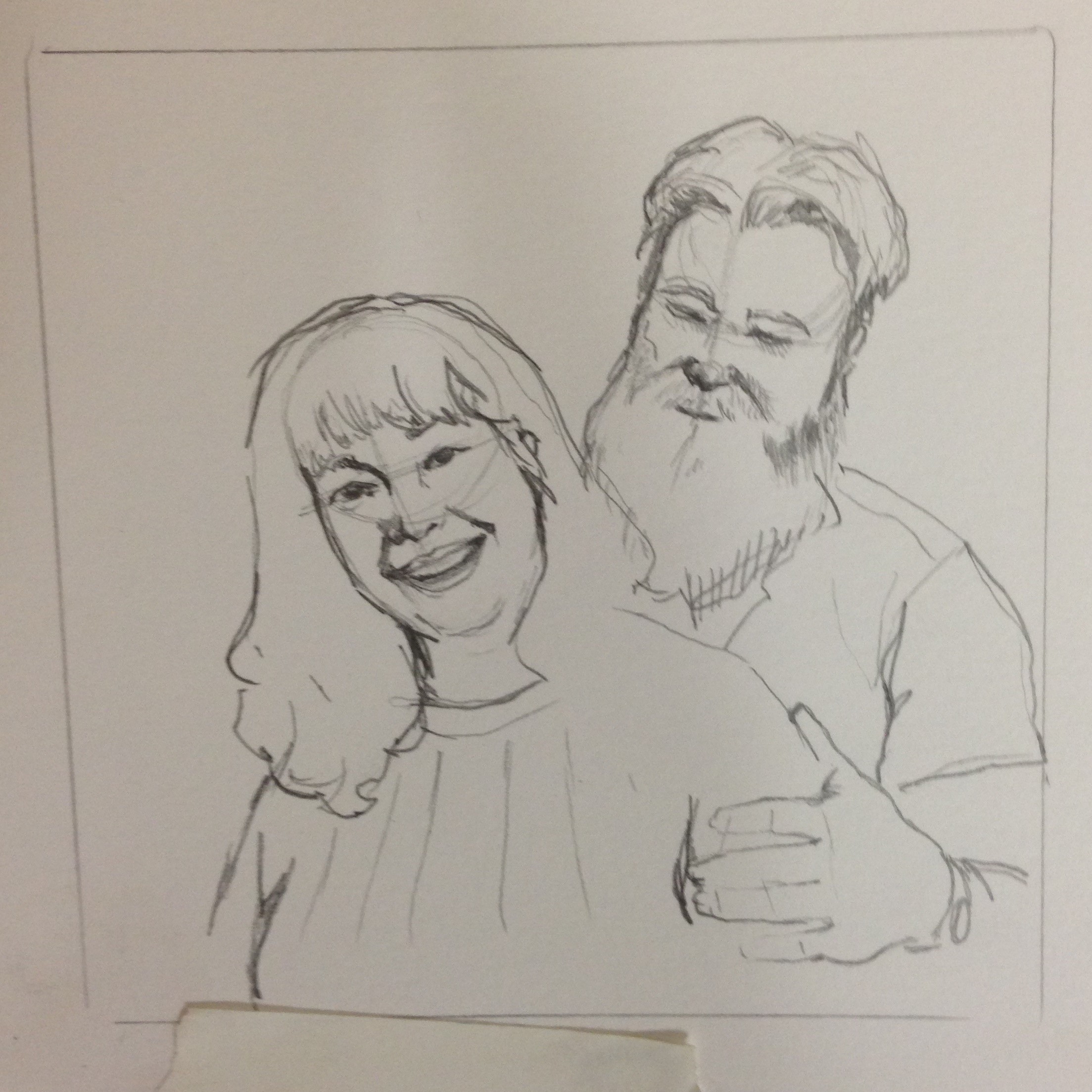
1.) Original sketch on paper
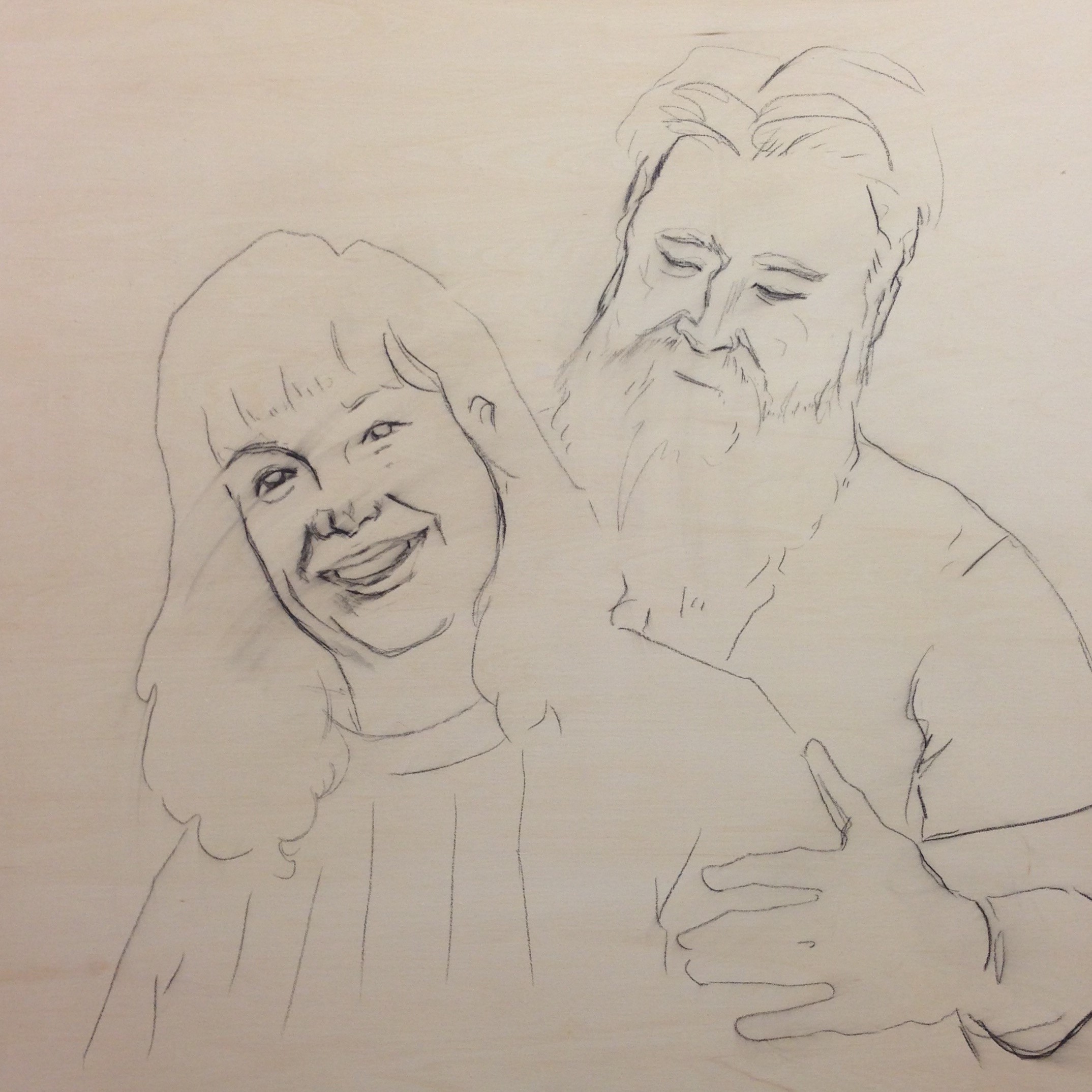
2.) Sketch on panel surface
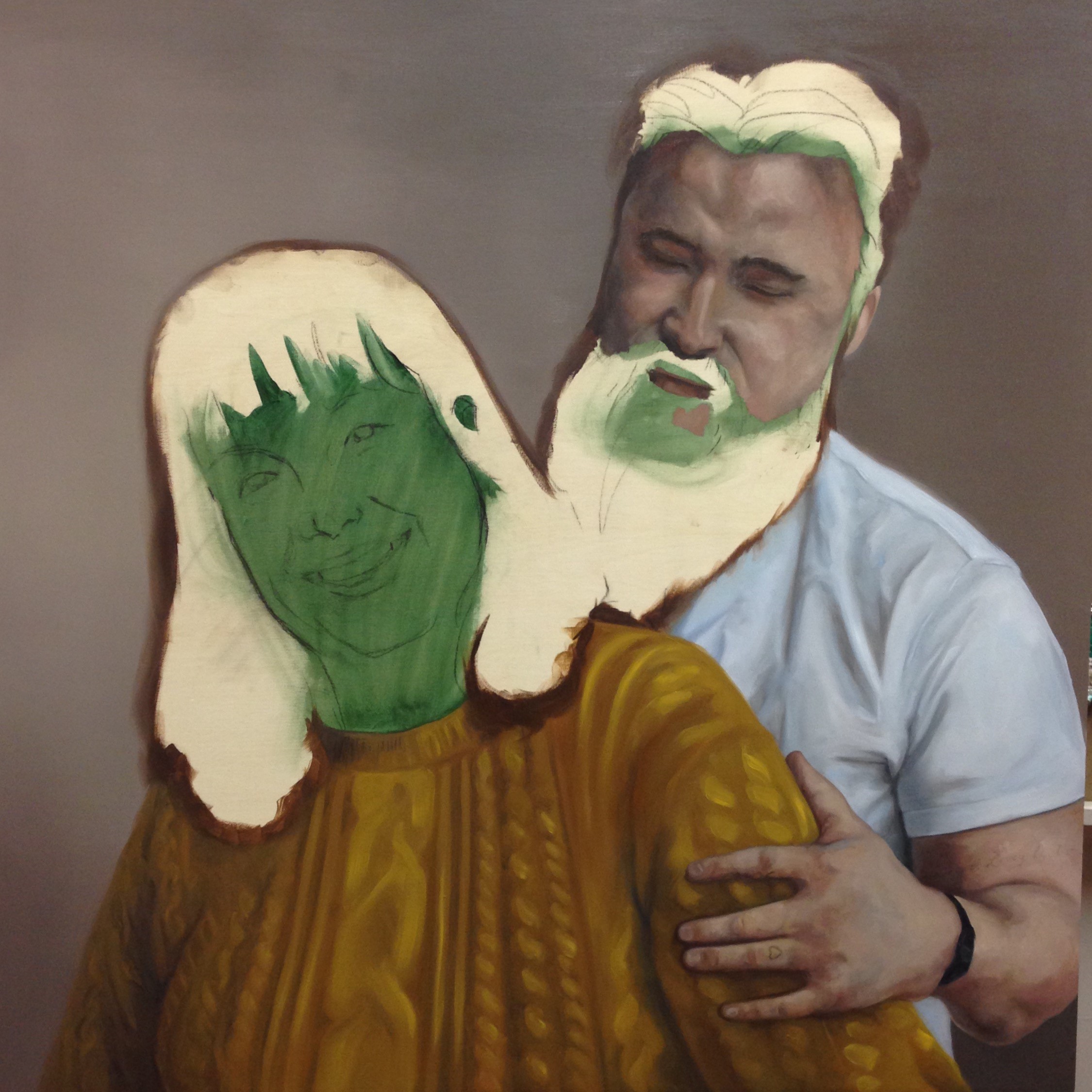
3.) Imprimatura wash on areas that will have skin tone. Filling out background, clothing
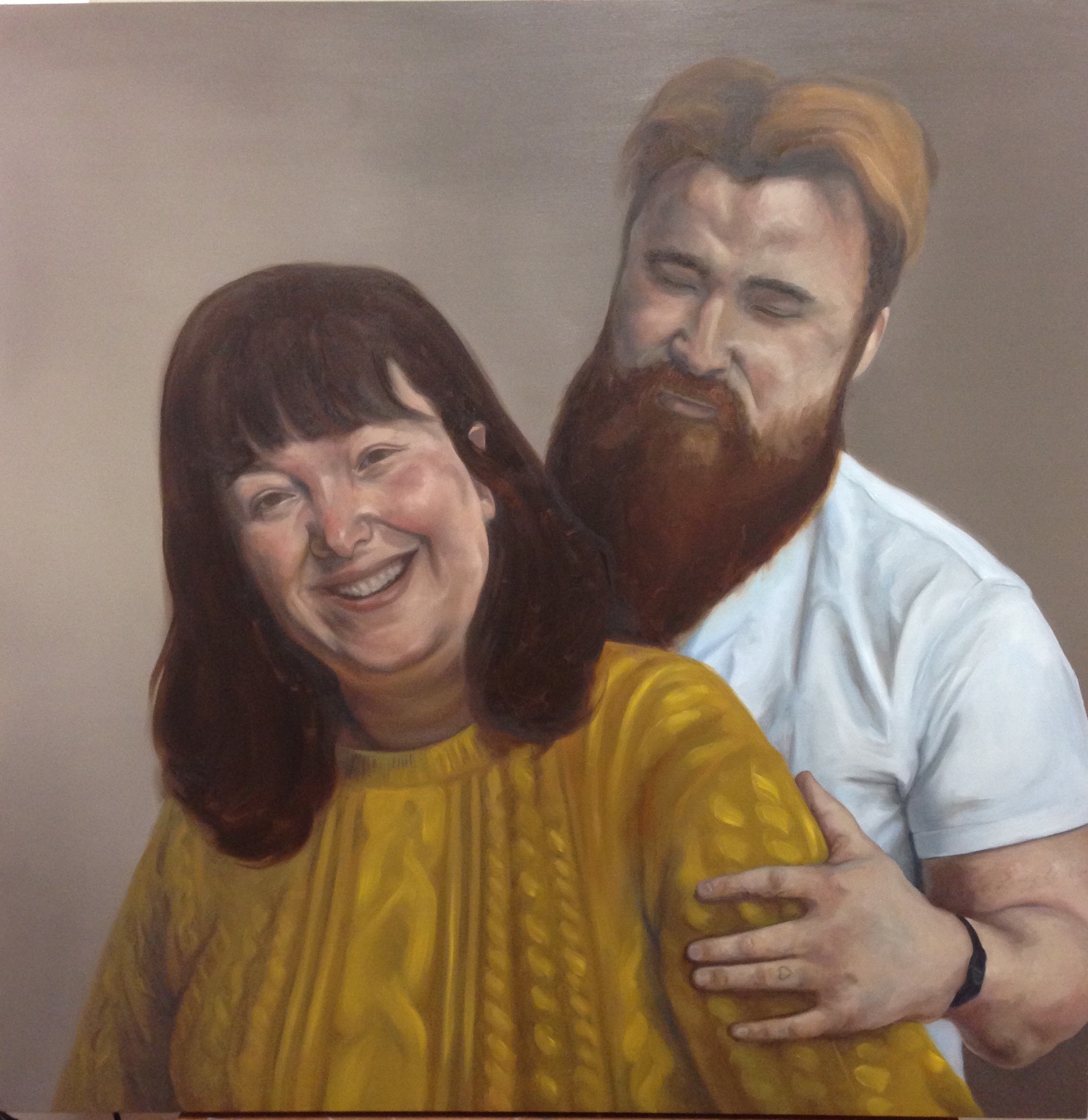
4.) Fleshing out portrait
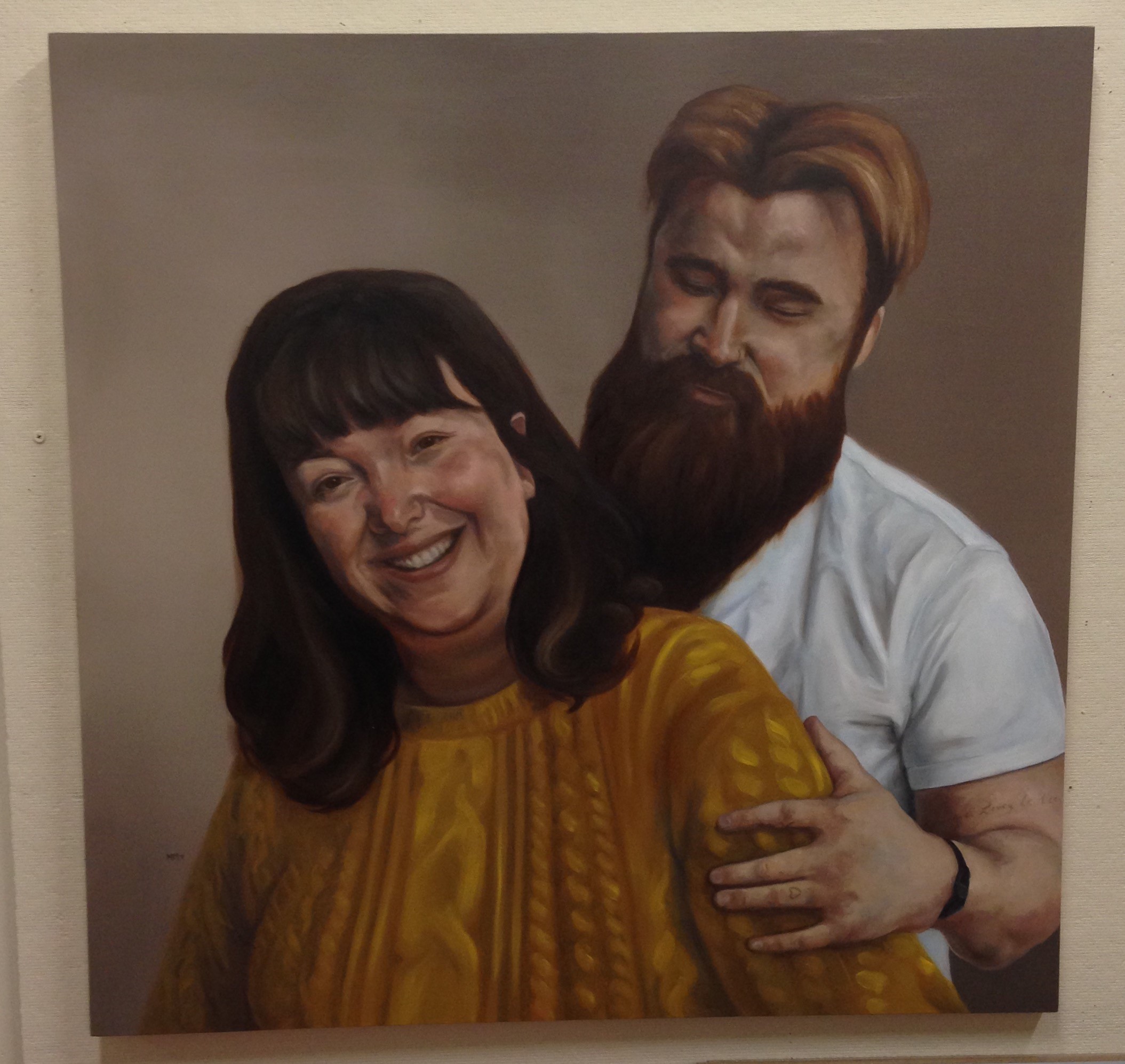
5.) Final Details


